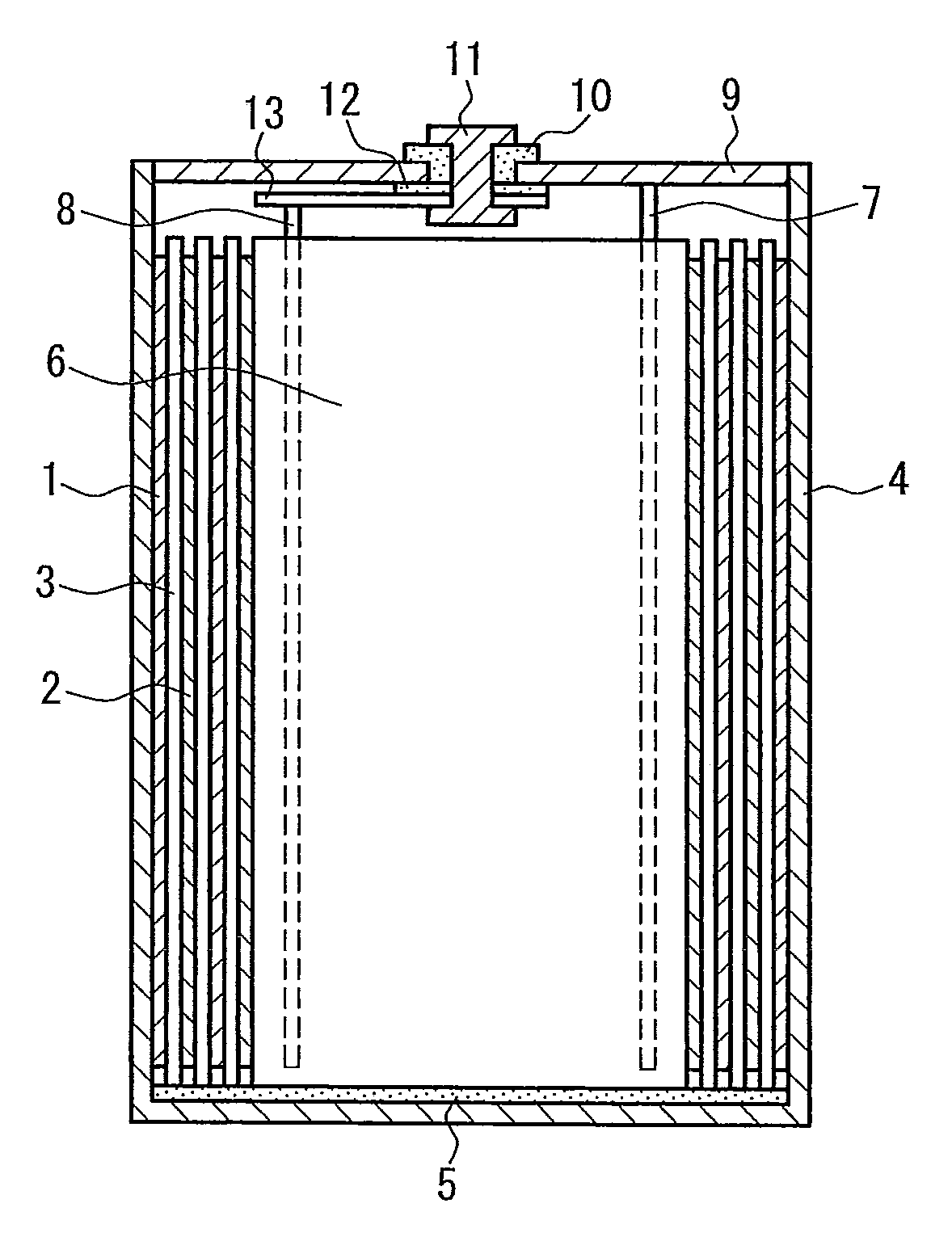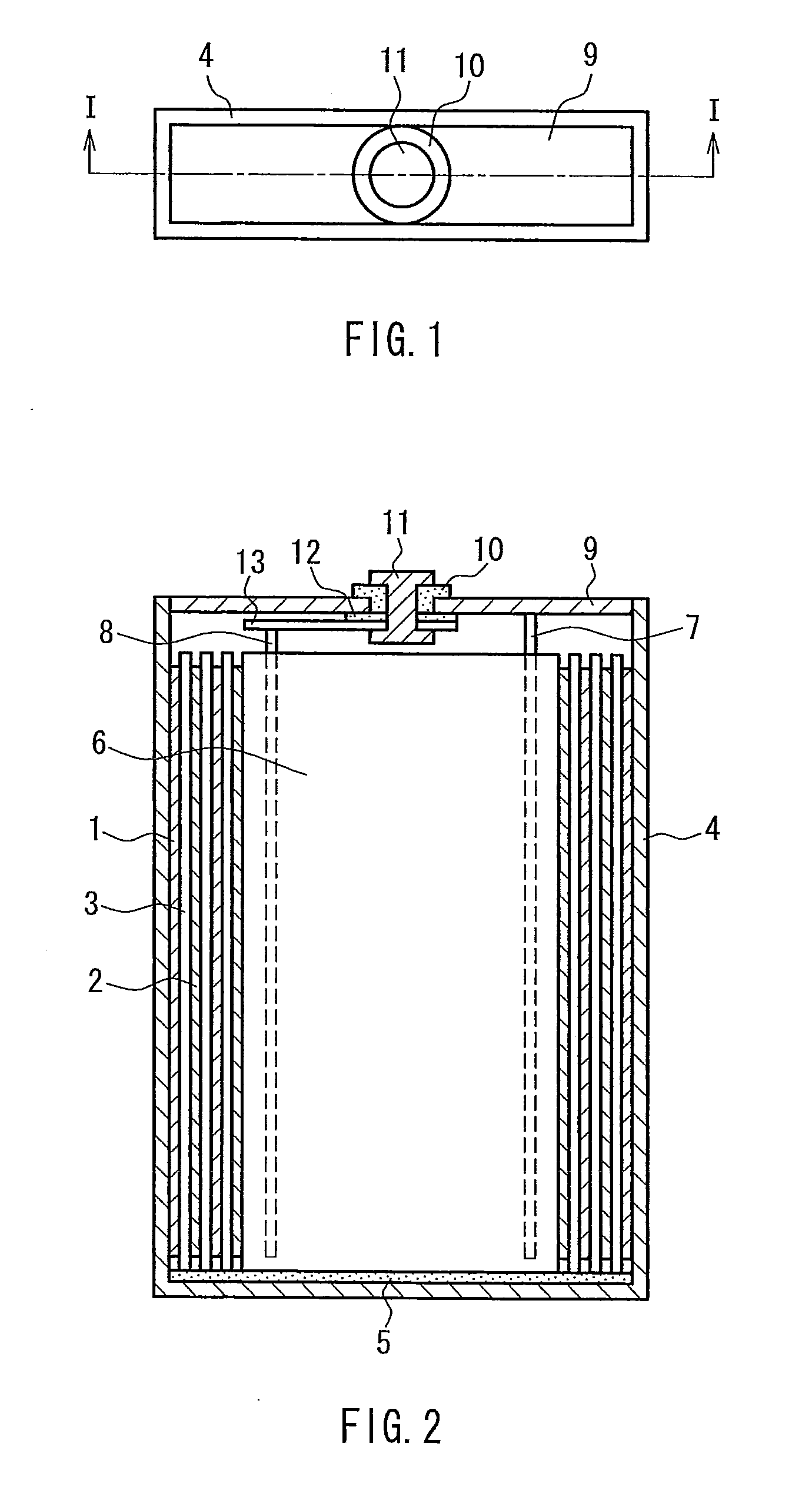Separator for battery, method for manufacturing the same, and lithium secondary battery
a separation device and battery technology, applied in the manufacture of final products, cell components, cell components, etc., can solve the problems of residual stress, insufficient margin for securing battery safety, and distortion of film, etc., to achieve excellent storage characteristics and charge-discharge cycle characteristics, favorable reliability and safety, and excellent storage characteristics
- Summary
- Abstract
- Description
- Claims
- Application Information
AI Technical Summary
Benefits of technology
Problems solved by technology
Method used
Image
Examples
example 1
[0130]Fine particles obtained by treating surfaces of plate-like boehmite (with a mean particle diameter of 1 μm and an aspect ratio of 10) to be hydrophobic using methyltriethoxysilane [“SZ6072 (trade name)” manufactured by Dow Corning Toray Company, Limited] serving as a surface treating agent by the following method were used as the inorganic fine particles (B). 10 g of the above-noted surface treating agent was dropped into 1000 g of water with a pH 4, followed by stirring for 1 hour. A slurry made of 1000 g of plate-like boehmite and 1000 g of water was added to this surface treating agent solution while stirring, and then stirred for 60 minutes. Thereafter, fine particles were separated by sedimentation with the solution standing still. The fine particles were dried at 120° C. under a reduced pressure for 15 hours, thereby obtaining the inorganic fine particles (B) whose surfaces were treated to be hydrophobic.
[0131]A slurry was obtained by adding 1000 g of water to 1000 g of ...
example 2
[0133]The inorganic fine particles (B) whose surfaces were treated to be hydrophobic were produced similarly to Example 1 except for using “AV43-206M (trade name)” manufactured by Dow Corning Toray Company, Limited as the surface reforming agent, and the separator was produced similarly to Example 1 except for using these inorganic fine particles (B).
[0134]In the separator of Example 2, when the specific gravity of the inorganic fine particles (B) was 3 g / cm3, that of the binder was 1 g / cm3 and that of PET in the PET nonwoven fabric was 1.38 g / cm3, the volume content of the inorganic fine particles (B) was calculated as 43.5%.
example 3
[0135]The inorganic fine particles (B) whose surfaces were treated to be hydrophobic were produced similarly to Example 1 except for using “AV43-210MC (trade name)” manufactured by Dow Corning Toray Company, Limited as the surface reforming agent, and the separator was produced similarly to Example 1 except for using these inorganic fine particles (B).
[0136]In the separator of Example 3, when the specific gravity of the inorganic fine particles (B) was 3 g / cm3, that of the binder was 1 g / cm3 and that of PET in the PET nonwoven fabric was 1.38 g / cm3, the volume content of the inorganic fine particles (B) was calculated as 43.5%.
PUM
| Property | Measurement | Unit |
|---|---|---|
| heat resistant temperature | aaaaa | aaaaa |
| thickness | aaaaa | aaaaa |
| thickness | aaaaa | aaaaa |
Abstract
Description
Claims
Application Information
 Login to View More
Login to View More - R&D
- Intellectual Property
- Life Sciences
- Materials
- Tech Scout
- Unparalleled Data Quality
- Higher Quality Content
- 60% Fewer Hallucinations
Browse by: Latest US Patents, China's latest patents, Technical Efficacy Thesaurus, Application Domain, Technology Topic, Popular Technical Reports.
© 2025 PatSnap. All rights reserved.Legal|Privacy policy|Modern Slavery Act Transparency Statement|Sitemap|About US| Contact US: help@patsnap.com


